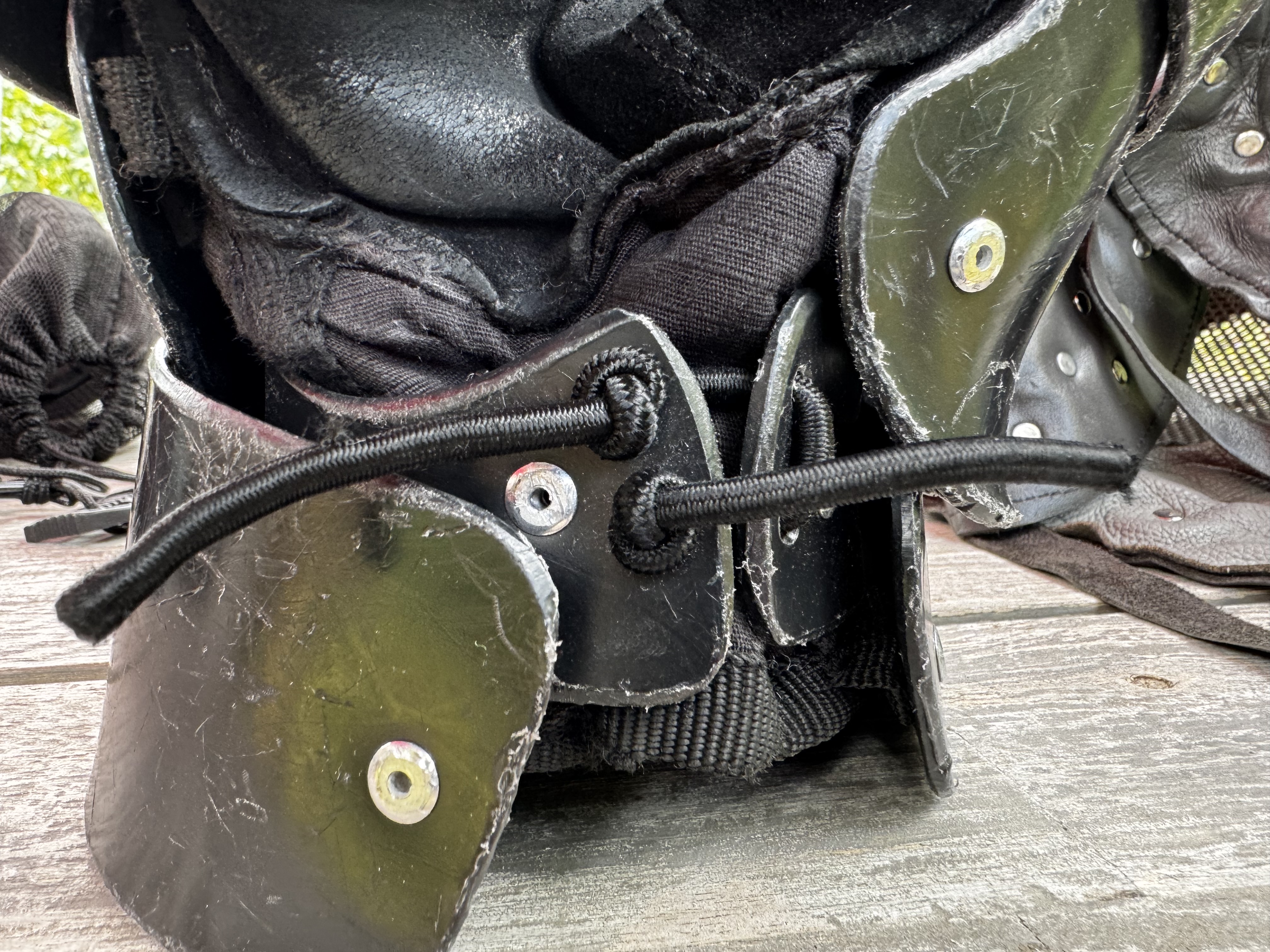
Posted: 31 July 2024 | Last modified: 28 December 2024 | Expires: 27 April 2027
The Black Knights are the fourth pair of heavy HEMA gloves I purchased, picked up in July, 2023. At the time, I already sold my SG Mittens and SPES Red Lobsters, and was using my ProGauntlets full-time. The week before a competition, the latter broke and were unusable, so I borrowed a clubmate’s Black Knights and quickly ordered a pair of my own. I used them for about a year nearly exclusively, during which I also ordered a second pair in a smaller size. While I do recommend the gloves in my Longsword Glove Buying Guide, and believe they’re one of the better heavy gloves on the market, I do have some caveats worth mentioning.
When I measured my hands per HF’s guide, I found myself in-between the S and M/L sizes. I decided to order the M/Ls, which is the size I borrowed before ordering my own pair. (I’ll refer to this pair as my BK1s hereafter.) Upon receiving them, they fit quite well; the gloves were reasonably snug, and the ends of my fingers didn’t feel cramped at all. Unlike with the hoof-style underglove on the Red Lobsters, the Black Knights have a single pocket for all four fingers, which didn’t feel quite as nice as the SPES underglove, but I don’t feel there’s any lack (or gain) of functionality either way. The underglove on the Black Knights doesn’t feel as nice as the underglove on the Red Lobsters, but it’s still way better than the uncomfortable finger pocket on the SG Mittens.
Getting my hands in and out of the Black Knights is easy. There’s an elastic band that can be tightened to make the wrist more snug, but the band has to be untied and retied manually; there’s no spring mechanism to easily cinch the wrist, nor a buckle like on the Red Lobsters to quickly adjust the tightness. While a quick-cinching mechanism would be nice, the lack of extraneous parts also makes for less to go wrong, so I can’t really complain about this. I’ll add, though, that since the elastic wrist tie is rounded, like the rounded elastic ties on SPES gear, the knots have a tendency to undo themselves over time, so you’ll want to routinely check to ensure the knot on the wrist tie is tight once you have it to your liking. For those with thinner wrists, you’ll probably want to undo the default knot on this tie, tighten the elastic, and then retie the knot so the wrist is more snug.

Wrist articulation is good overall. At least one clubmate mentioned they’d prefer a bit more elasticity on the cuff, or between plates on the cuff, but I personally am fine with my wrist mobility in these and consider it at least on part with what I’ve experienced with other heavy gloves. The cuff is also adequately long. I wouldn’t mind it a tad longer, but it’s at a perfectly reasonable length.
After months of use, the leather underglove starts to stretch out, so by the time I had the gloves for about six months, they felt like they were a size too big. I ended up ordering a second pair of Black Knights in size S, which initially felt like they might be a touch too short on the fingers, but in the following weeks as the leather underglove stretched out, the fit continued to improve. (Hereafter, I’ll refer to these as my BK2s.) The big takeaway is that if you’re in-between sizes, expect the glove to stretch out, so it may be worth ordering the smaller size.
The big downside of the inner glove stretching out for me was the distance the plates were from my hands over time. That is to say, with a relaxed hand, the exterior plating on my worn BK1s would stand off my hands just enough that a hard hit to the hands smacked the plate into my index knuckle, occasionally causing pain and swelling. This was far less an issue with my BK2s where the plate sat closer to my hand. Also, as my BK1s wore in, the top plate would shift more and more along the underglove, so some impacts would hit the edge of the top plate, push it aside, and the opponent’s sword would continue forward to hit the outside of my index finger knuckle.
Mobility-wise, I have no complains about the Black Knights in either size. I can shift my hand reasonably well on the hilt of my swords, and a handshake grip is easy to maintain.
One more note about sizing: our club ordered a pair of XS Black Knights as a loaners, and quite remarkably, they fit my hands fine when my hand is closed. My fingers do hit the very ends of the finger pocket when fully opening my hand, but it’s neither uncomfortable nor a position my hands are ever realistically in. I’m fairly convinced at this point that I could make an XS glove work for me, so if you’re fretting about glove size, don’t. Even if you miss your ideal size by one, you’ll still likely end up with a glove that works for you.
HF Armory doesn’t provide an exact weight for the gloves, merely stating they’re under one kg. I no longer have my BK2s, but my worn BK1s weigh 842g (418g left, 424g right). That’s pretty close, especially considering I modded the right glove, which undoubtedly added some spare weight.
The width of my BK1s at the widest point is about 5.7” (14.5cm). So they’re about as wide as the SG Mittens, but a little heavier. Yet, still notably lighter than the Lobsters. The table below provides more comparisons among the gloves I tested.
| Model | Weight (g) | Widest Point (cm) |
|---|---|---|
| HF Black Knights (M/L) | 842 | 14.5 |
| SPES Red Lobsters (M/L) | 1,165 | 16.5 |
| Sparring Glove Mittens (long custom) | 727 | 14.75 |
| ProGauntlets (L) | 992 | 16 |
| CHFG Michaels (L) | 820 | 12.9 |
If you read my previous glove reviews, you may recall that I pointed out how a slim glove like the SG Mittens may not actually fit certain handle sizes, as illustrated with a synthetic sansibar I have. The BKs manage to come in almost as slim as the Mittens, but because of the floating plate, still manage to fit my sansibar handle fine, so if you play with short-handled trainers, the BKs give you that added flexibility, and still offer a pretty small footprint compared to some other gloves.
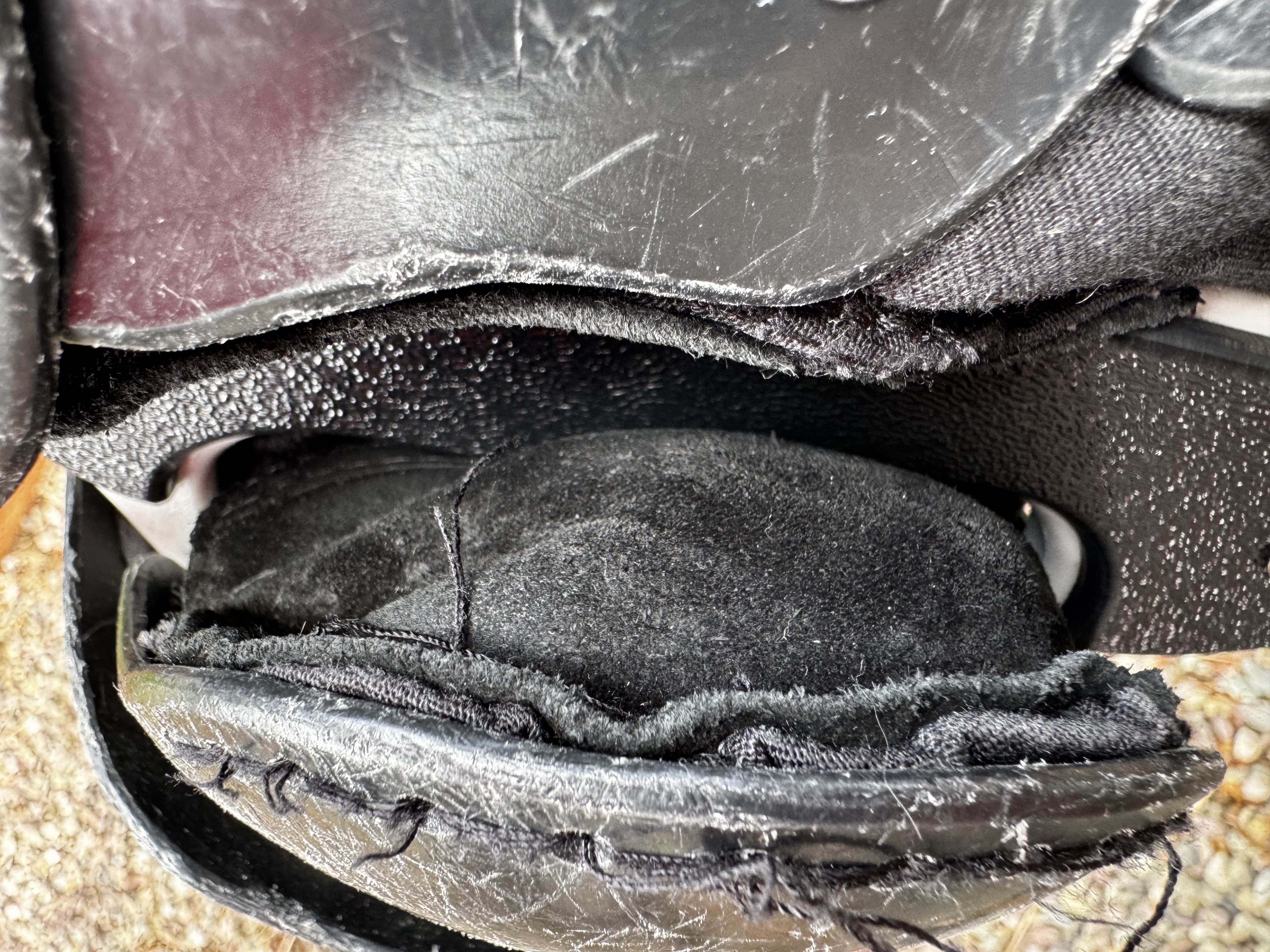
Worth noting is that the dye on the inner glove will bleed for the first couple months of owning the gloves as you sweat, so expect some darkened hands after practice. This was much more of a problem with my BK1s, but the other two pairs I used bled a lot less.
My BK1s held up remarkably well for the first six months, before they started to stretch out. By month nine or so, there was some damage requiring duct tape, and in month ten, the middle thumb plate on my right glove broke off. Otherwise, they’re scuffed up and look pretty battle-worn as you can see, but they’ve suffered no other major damage in a year of use.
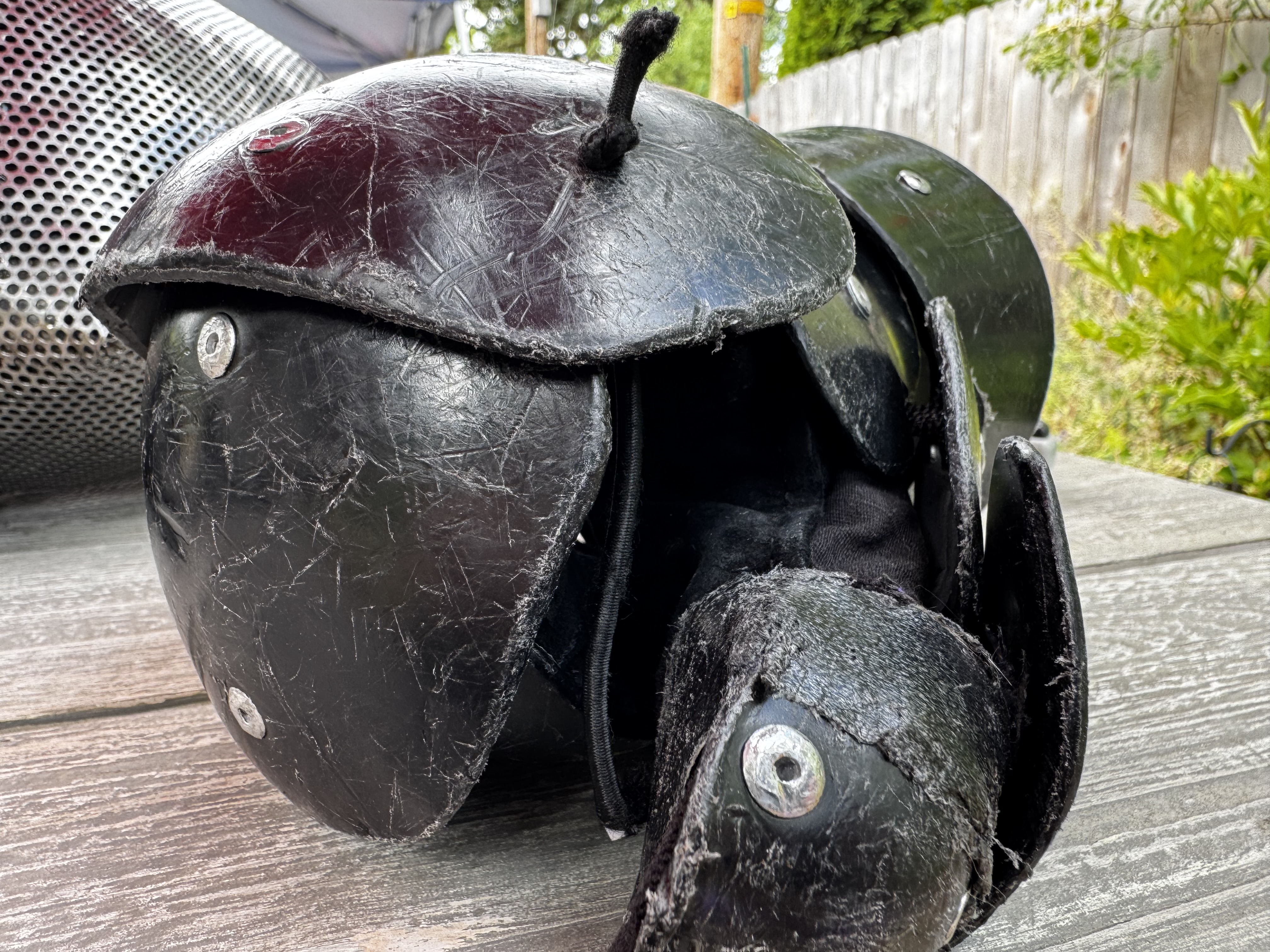
The first issue I noticed on my BK1s was on my strong-side glove, where the threading on the edge of the front plate at the fingertips tore. This threading helps attach the plate to the underglove, and presumably tore from friction against incoming blade strikes, but the underglove still seemed solidly attached to the plate, as it was also glued in place as a form of redundancy. After about nine months of owning the gloves, I eventually got around to re-sewing the torn area just to be safe. My sewing job was ugly, but it worked.
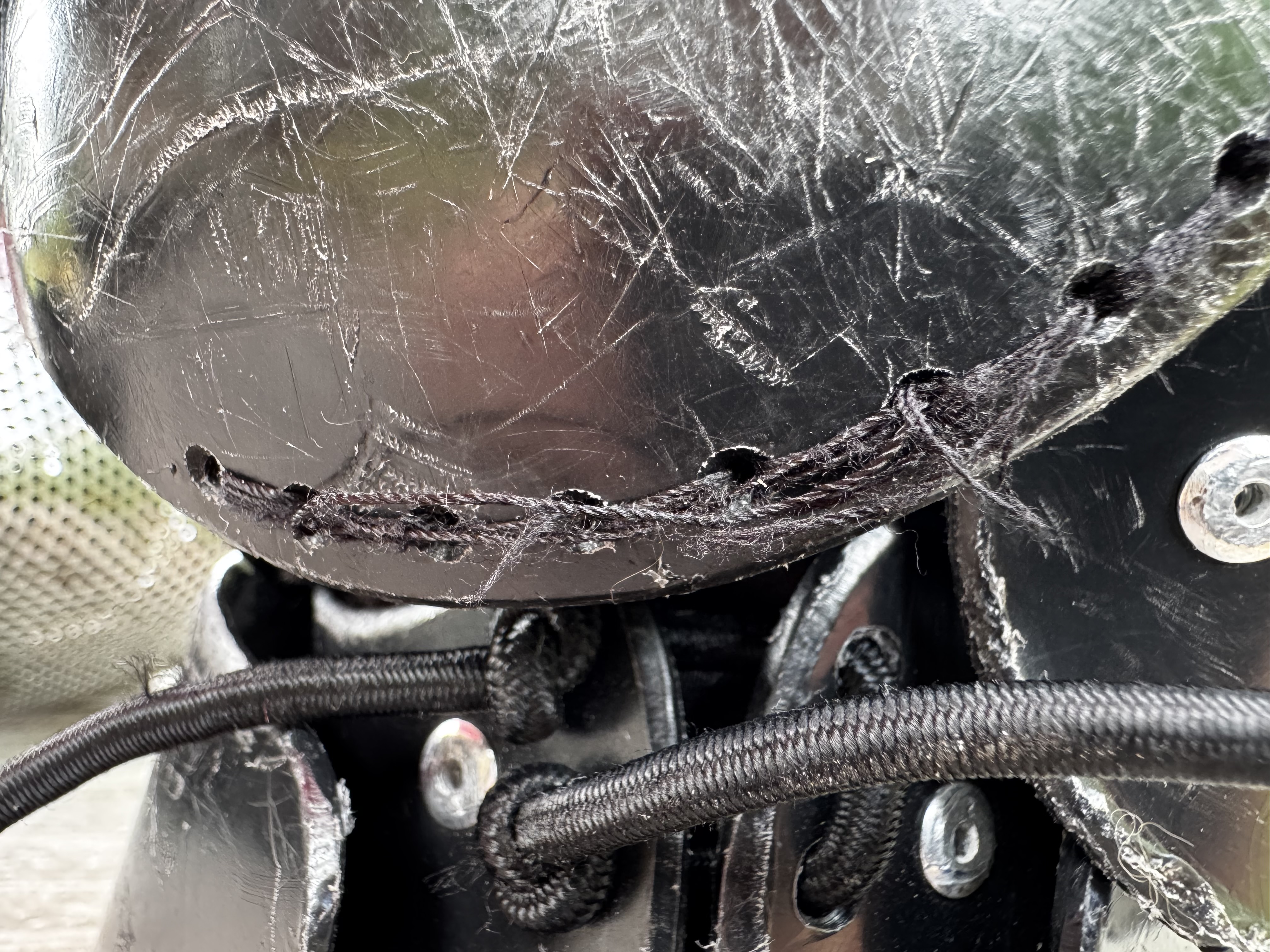
Unfortunately, my BK2s didn’t hold up as well. Within weeks of owning them, the middle thumb plate on my strong hand ripped off at a competition. This was supposedly a known issue among a batch of gloves Purpleheart received from HF, owing to the rivet tearing out of the webbing. I was told that this issue was fixed on later batches, as issues with the webbing were supposedly sorted. The gloves were replaced under warranty, and by the time this happened, the threading on my strong-side glove was also tearing, as it had on my BK1s.
About a month after getting a replacement pair of gloves for my BK2s, a thrust to my strong-side hand got beneath the plate on the left side of my index finger, tore through the underglove, and caused a blood blister on my finger.
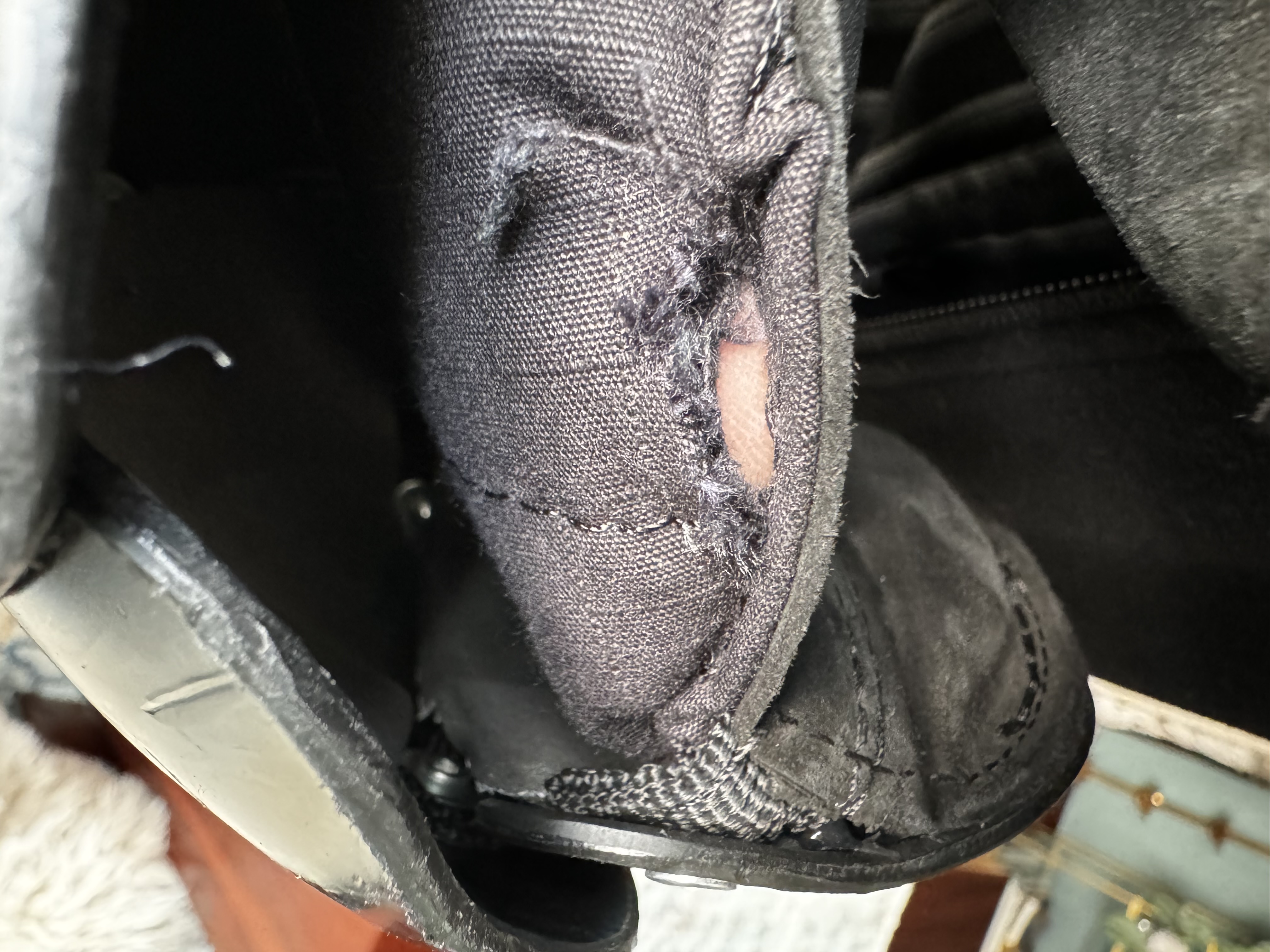
A couple days later, I took a hit to the thumb, which caused the underglove at the tip of my thumb to pop out of the thumb plate. At the thumb, the underglove is attached to the plate only with a bit of glue, and on this pair of gloves, the glue clearly didn’t hold well. That has me concerned about whatever glue HF uses to assemble these. I played with the thumb on the other hand, and with little force, was able to slowly pull the underglove thumb loose from the thumb plate here too.
That said, the failed glue on the thumb is easily rectified with some industrial-grade glue available from the local hardware store. Regarding the glue, it seems whatever HF is using in-house is a lot weaker than the E6000 glue I used as an experimental fix. If you buy some BKs, I’d keep an eye on how well the underglove thumb is staying in the pocket, and either add glue as necessary, or literally tear out the glove and reglue for peace-of-mind.
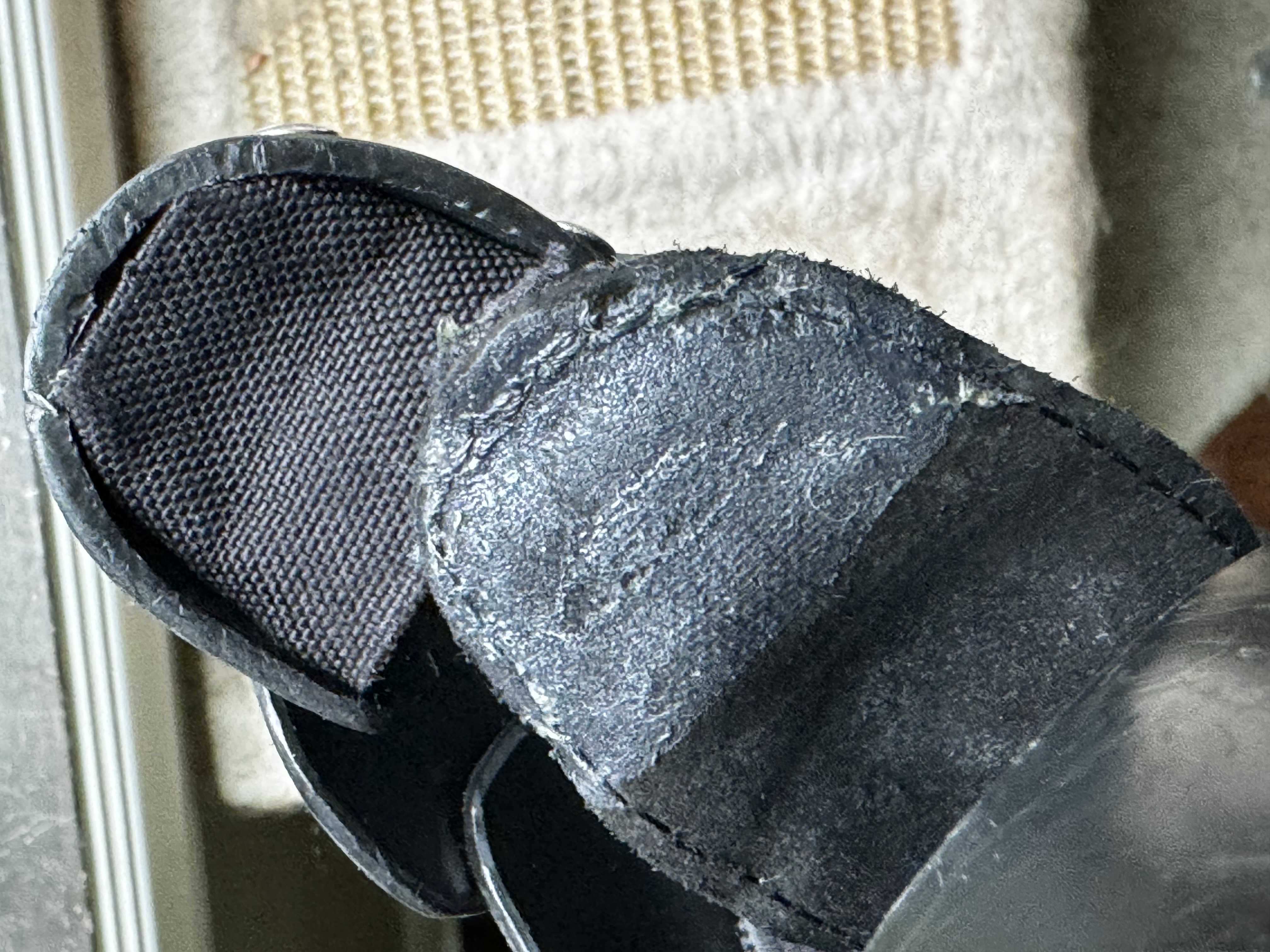
My replacement BK2s went back to Purpleheart under warranty also, which had me a bit concerned about quality control on these gloves. I was at least happy that my BK1s were holding up, until I noticed that the textile material on the bottom of the thumb started to tear away from the rivet attaching it to the thumb plate. Properly fixing this seemed complicated, but to add some stability here, I just duct-taped around the thumb plate, over the textile, to help keep it secured and my thumb firmly in the thumb shell. This is a common fix for some other gloves also (e.g. Sparring Glove Infinities), so while annoying, it’s not a major problem so long as you routinely check the tape for tears, and reapply accordingly. You can see the duct tape around the thumb in the third picture in this article.
As I mentioned earlier, the middle thumb plate on my BK1s also tore off eventually, which has me wondering if the “known problem” on the S-size gloves wasn’t just a bad batch issue, but an actual design weakness. It seems to me, there should be larger washers installed to prevent this kind of tearing, or thicker/stronger webbing. Clubmates with gloves from later batches also had this issue, so I’m leaning towards the stock hardware being a design flaw.
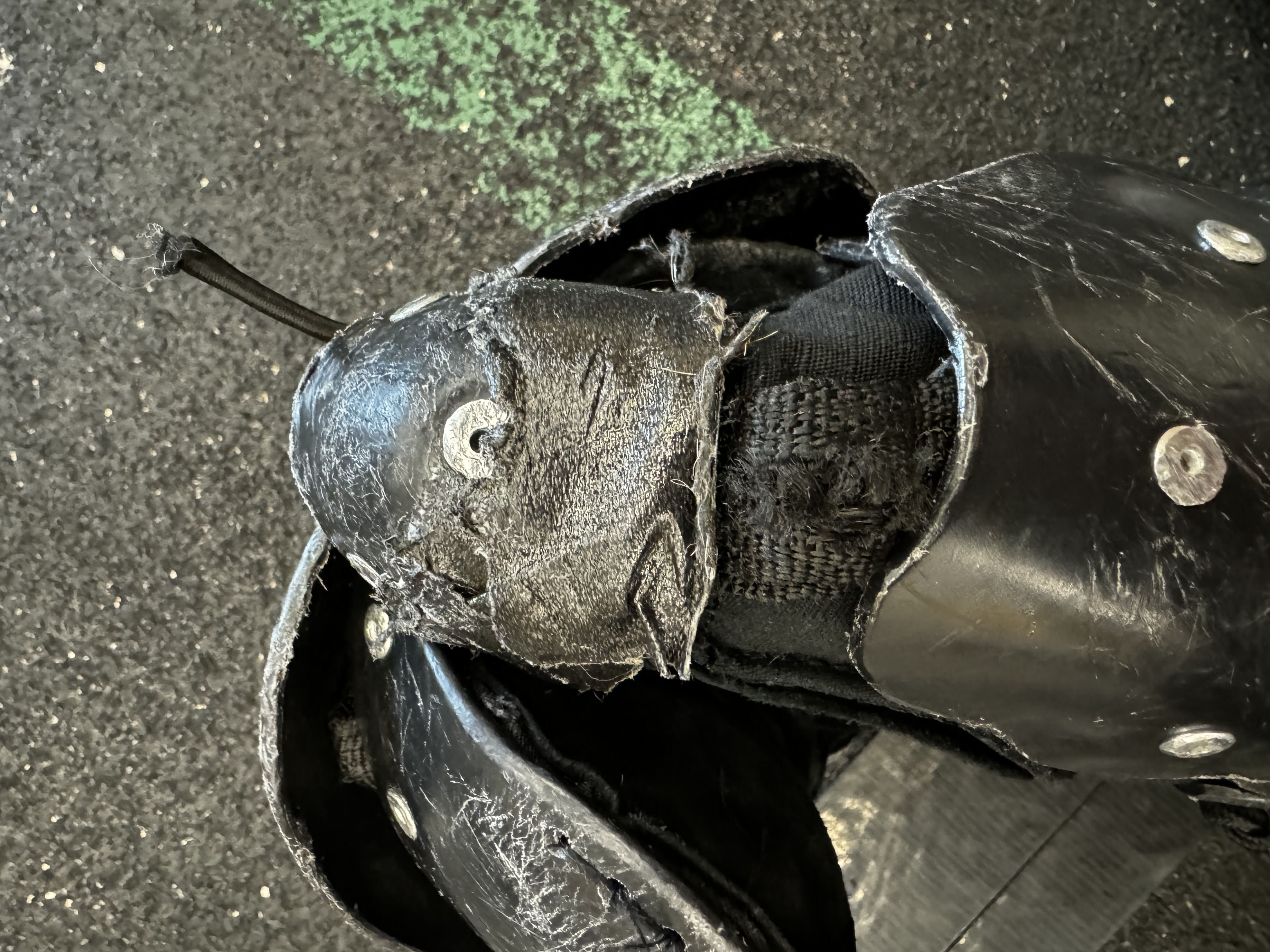
Since my BK1s were out-of-warranty by the time the middle thumb plate ripped off, I had to rely on my own devices to fix it. I purchased an M5 washer from the local True Value ($0.35), as well as an 8-32 x 1/4” chicago/binding screw ($1.19). I drilled out the old rivet from the plate using a 3/16” drill bit, and cut off a spare bit of cordura as extra backing material. Using an awl, I punched a hole through the middle of the cordura so that the barrel end of the chicago screw would fit inside it.
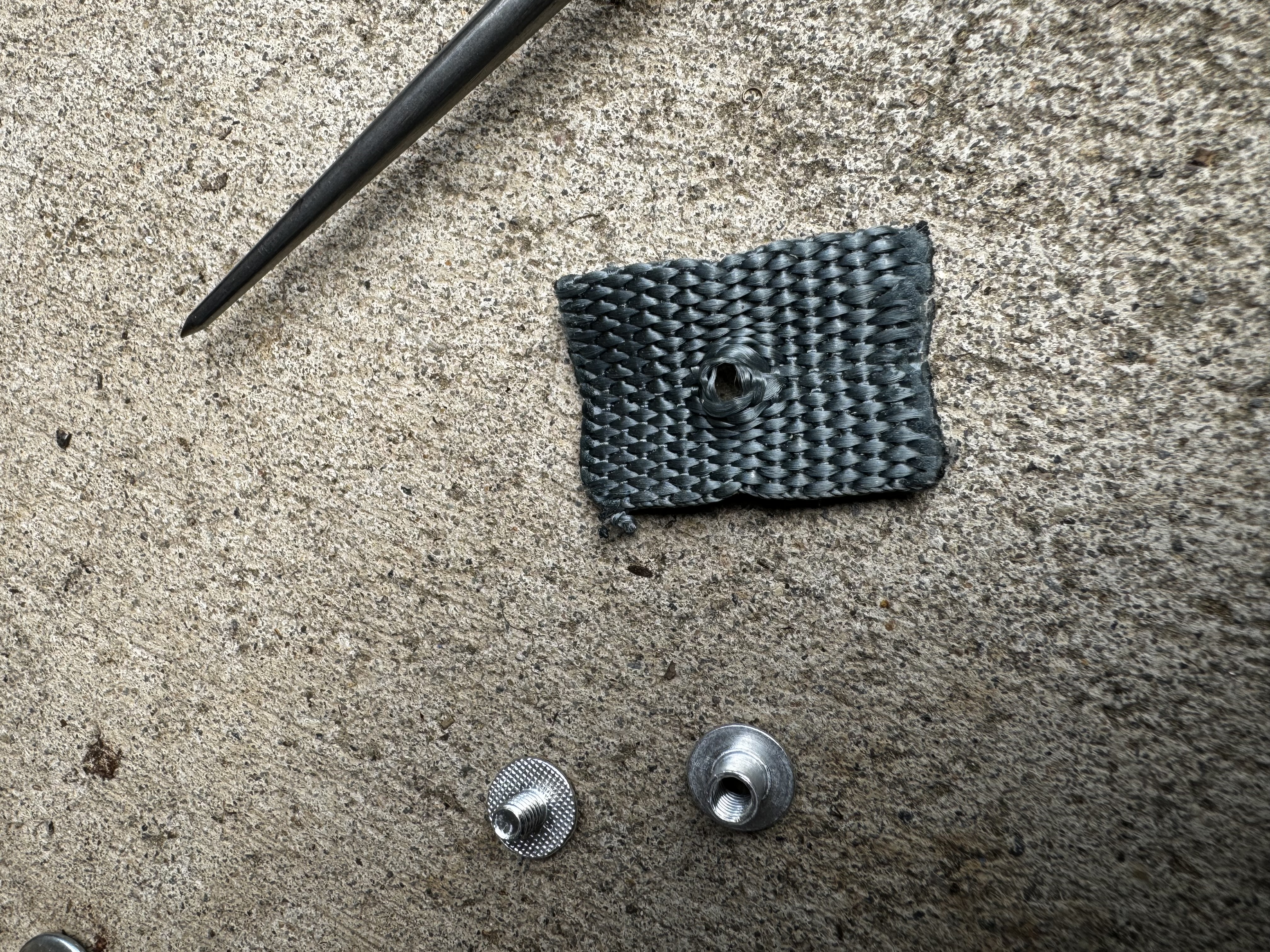
With the washer placed over the chicago screw first, and then the scrap cordura, you can then place this sandwich of components behind the old cordura strap of the glove. I also singed the old cordura with a lighter, just to make sure there were no loose strands and further fraying.
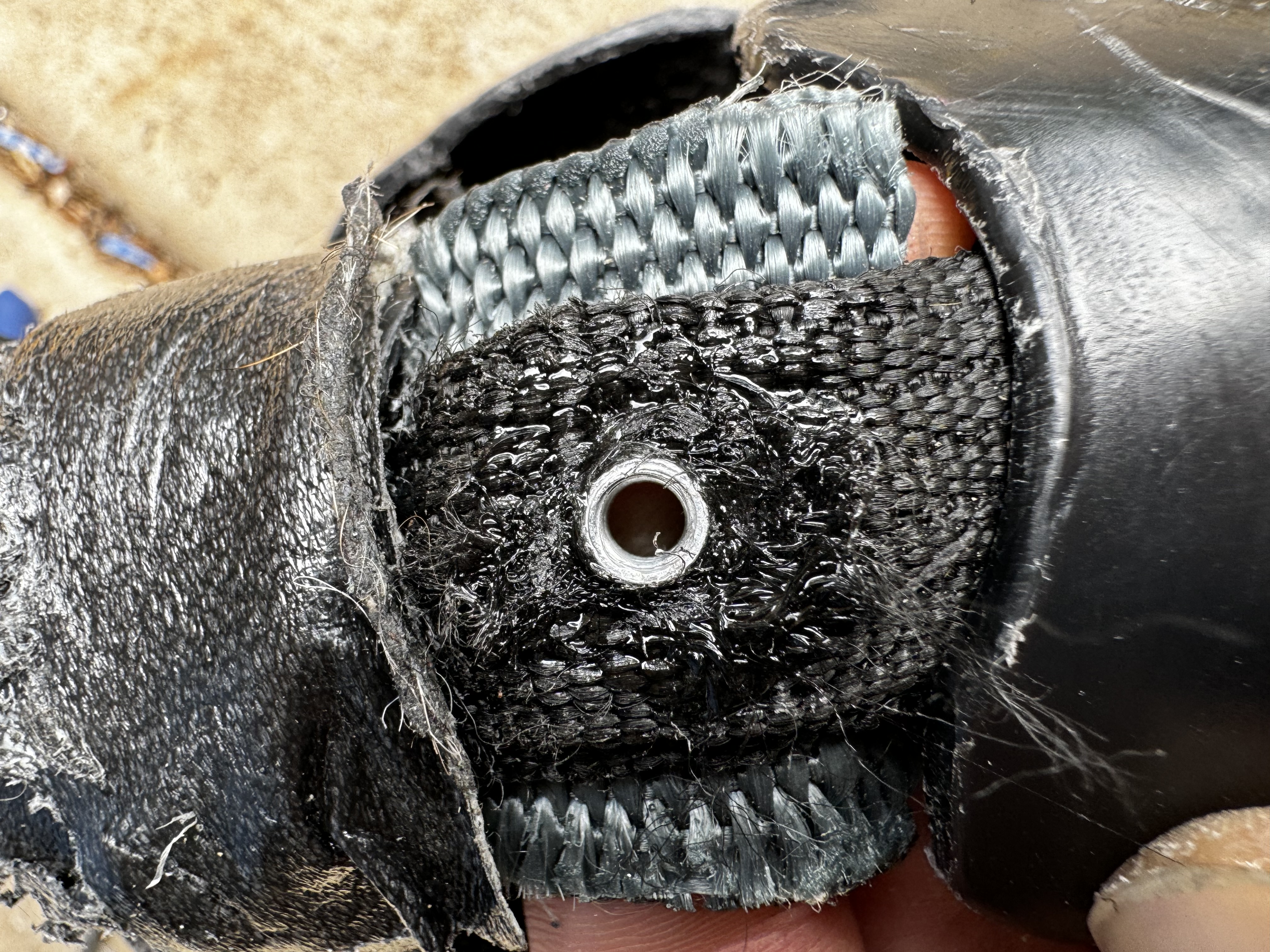
Holding the bottom piece of the chicago screw with some needle nose pliers, the top portion of the chicago screw slips into the top of the plastic plate, and then just gets screwed in. I also added a little bit of blue Loctite (thread fastener) to ensure the screw doesn’t undo itself from glove hits/vibrations over time.
The above fix didn’t take long, and is way faster than waiting for replacement gloves to come. If your gloves are under warranty and your thumb plate rips out, I’d check with your reseller to see if doing this fix voids the warranty further. If not, I’d recommend doing this instead of dealing with back-and-forth shipping, unless you have a backup pair of gloves you can rely on.
I did this thumb plate mod in early June, 2024, and received my pair of CHFG Michaels shortly thereafter, so the gloves didn’t get used a ton until the Michaels broke and were sent back for a warranty replacement. After a couple weeks of use, the thumb plate ripped off again. It seems the thread locker didn’t last, and the screw came out of the post. The head of the screw was also badly bent, so I suspect the screw may not have completely come out. I only had a spare 3/16” binding screws, so made do with that, but they were too short and also quickly failed similarly, even after removing the spare cordura I added to keep things tightened up more. I eventually picked up a 3/8” binding screw and put things back together with that (to include the extra cordura), but this time I first opened up the hole on the plate itself a bit, and put the barrel end of the binding screw in through the top, thinking that maybe this would help prevent the screw from undoing itself after taking a direct hit; I suspect that a hit to the top of the female end, in just the right way, may be what caused the thread locker to give.
Two final durability notes: a friend’s pair of Black Knights suffered a burst seam on his off-hand inner-glove. That may be more a problem with non-rounded pommels, but I wanted to mention it as another potential weak-point of the Black Knights. It seems some folks are seeing the threading on the inner glove seams not lasting too long, requiring either resewing, or otherwise patching. Overall though, I’d say the inner glove of the Black Knights is more durable than some undergloves, such as those on the CHFG line of gloves, or the SG Infinity gloves, which anecdotally wear much quicker overall.
The other issue I haven’t experienced personally but have seen on at least two other Black Knights locally is a broken rivet on the wrist plates. This is also an easy fix by drilling out the broken rivet and using a chicago screw to fasten things back together. I’m not sure just how widespread this issue is overall, but it’s seemingly another weak point to take into consideration.
One aspect of the Black Knights which others have pointed out is that the main exterior plate, as the underglove stretches and wears in, can have a tendency to shift around, as it’s not attached to the underglove at the sides. I’ve yet to hear of a notable injury resulting from this, but I understand the concern, and there’s a good argument to be made that the plate should be riveted to the underglove at the sides, or at least held in place better with an elastic tie. Arguably, my aforementioned blood blister might have been averted if the plating covered the side of the finger a bit better, or at least was attached better to the sides of the underglove.
The weekend prior to the thumb plate tearing off my BK1s, I actually fixed the shifting plate issue, by drilling a hole in the top plate, punching a hole at the edge of the underglove and adding a grommet here, and then tying the grommet to the hole in the top plate with an elastic tie. This helps prevent the top plate from shifting, and even holds the top plate closer to the underglove, so this modification also somewhat addresses the issue of my knuckle getting slammed by the top plate on impact.
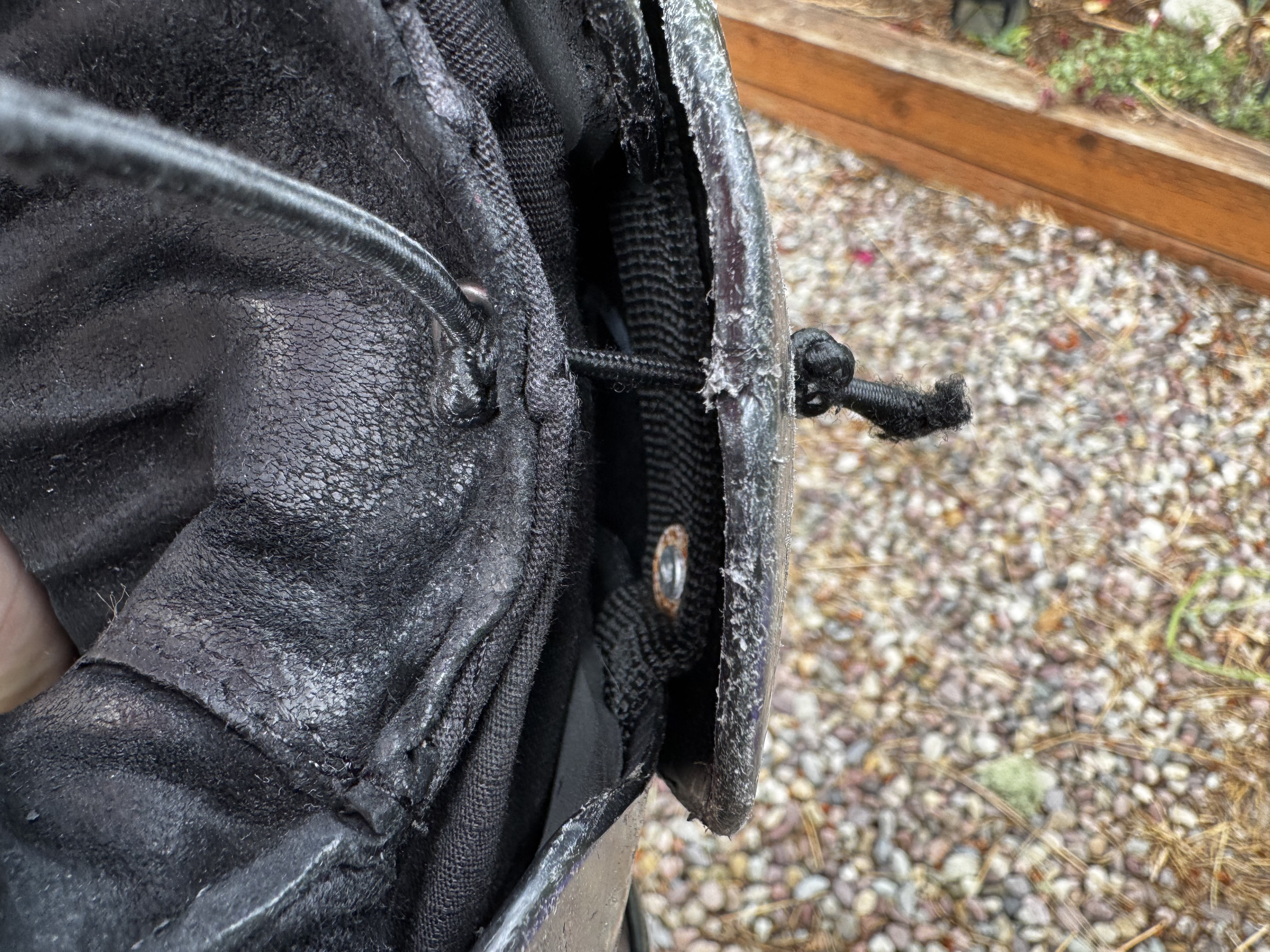
When I mentioned earlier that you if you’re in-between sizes, you may actually not want to opt for the smaller size, it’s because of this mod. What I found is that after you perform this mod, the glove isn’t as wide inside anymore, because the grommet with tie effectively take up a tiny amount of space at the edge of the underglove. So prior to this mod, my BK1s felt too large on my hands, but after performing the mod, the glove fit better again. If I had to do this mod on a pair of the S-size gloves, I suspect my hand would feel a bit more cramped. Maybe not a gamechanger, but something to consider, as the top plate shifting will come up eventually. Either you get a smaller glove and deal with taking an occasional painful hit to your index knuckle at the side when a blade smacks the shifting plate aside, or you buy the larger size initially and eventually perform a similar mod which will tighten the glove on, and plate to, your hand.
Generally speaking, most hits in the Black Knights are soaked up well. In the past year, I’ve had a few shots to the hands that registered notable pain, and most were to my stretched-out BK1s due to the distance at which the back plate stood from my hands when in a looser grip. I can think of some hits to the thumb that were painful, but I’m not sure those would have fallen lighter with another pair of heavy gloves. The only hard hit that left me with some mobility issues was due to a swollen thumb, where the opponent’s sword crashed down onto the inside of my right thumb, but I don’t see how any other heavy glove would have mitigated this any better.
The Black Knights are a fairly maintenance-free heavy glove for daily use, offer better protection than the SG Mittens, don’t have the plastic-breaking problems SPES has had recently, and are just more reliable than the Michaels. They’re fairly accessible, come in at a competitive price, and offer protection generally on par with other hard-shell gloves, so it’s hard not to recommend these gloves for most people.
That said, the gloves aren’t perfect, and over time, you’ll have to watch a couple problem spots on the gloves (threading, thumb pockets, shifting top plate), and there’s that looming issue of the middle thumb plate which is at best a QC issue, and at worst an outright design weakness. I’d love to see a minor revision in the future addressing some of these issues. Of course, none of the above mods are particularly difficult or costly to do, assuming you or a friend are handy. As every heavy glove will eventually have some issue, I don’t consider the aforementioned problems dealbreakers (unlike, say, the difficulty in repairing ProGauntlets. Most people likely won’t attempt a glove mod during the warranty period, but my suggestion is to preemptively at least do the thumb plate mod as early as possible, so a failure doesn’t take your glove out of commission mid-sparring. And, even during your warranty period, I’d check the adhesion of the thumb pockets routinely, and tear them out if it feels loose, so you can reglue with a better adhesive.
Assuming you want a plated glove to minimize impacts as much as possible, the BKs are still the go-to if lack of long-term maintenance is high on your priority list. But note that there’s enough that can go wrong if you spar hard that you’ll want a backup pair of gloves if you haven’t already modified your BKs, and you should be willing to do some do-it-yourself repairs once your gloves are out of warranty.